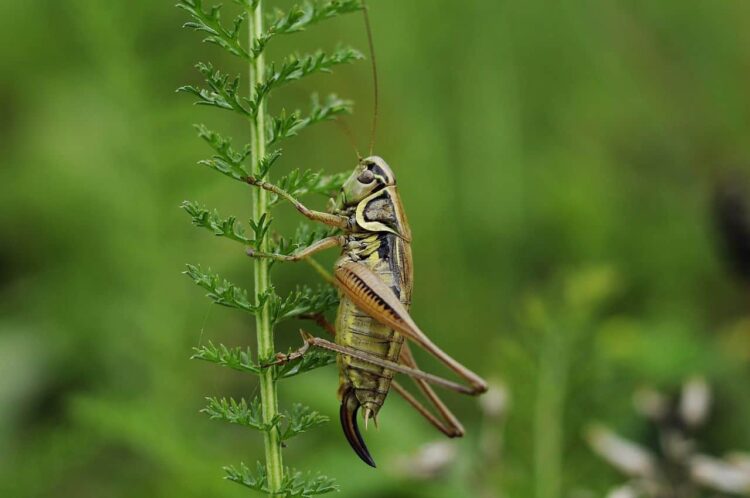Table of Contents
Stick insects are strictly herbivores whose diet consists of plant matter (leaves for the vast majority of species). The preferred type of leaves definitely varies from species to species, but most stick insect species will eat bramble and privet
and privet plant leaves.
plant leaves.
No, stick insects do not eat crickets, or any other type of insect for that matter. Stick insects are herbivores, meaning that they only eat plant life. Indeed, stick insects are physically incapable of eating and digesting other creatures. Their anatomy is simply not designed to eat anything other than vegetation.
For more advice and information on keeping and looking after stick insects, check out my ebook on Amazon click here
(opens in a new tab).

So What Do Stick Insects Actually Feed On?
Being exclusively herbivorous, stick insects will naturally go for leaves as their preferred means of sustenance. It is well known that most species of stick insect enjoy bramble
as their preferred means of sustenance. It is well known that most species of stick insect enjoy bramble and privet leaves. These two plants are ubiquitous and easy to find all over the world. Furthermore, both aforementioned plants are evergreens, meaning that fresh leaves are available all year round. When feeding stick insects in captivity, it is advisable to pick the cleanest and freshest leaves (as these would be their first choice out in the wild). The freshest leaves of any plant suitable for stick insects should be sourced away from roads or other sources of pollution. As well as this, you should definitely not feed stick insects any type of leaves or plant matter that has been treated with pesticides and/or herbicides. Basically, make sure all leaves – regardless of source – are thoroughly washed beforehand.
and privet leaves. These two plants are ubiquitous and easy to find all over the world. Furthermore, both aforementioned plants are evergreens, meaning that fresh leaves are available all year round. When feeding stick insects in captivity, it is advisable to pick the cleanest and freshest leaves (as these would be their first choice out in the wild). The freshest leaves of any plant suitable for stick insects should be sourced away from roads or other sources of pollution. As well as this, you should definitely not feed stick insects any type of leaves or plant matter that has been treated with pesticides and/or herbicides. Basically, make sure all leaves – regardless of source – are thoroughly washed beforehand.
Is It Possible to Feed A Stick Insect the Wrong Leaves?
There is no real danger of feeding your stick insects the wrong type of leaves as the creature instinctively knows if a leaf is toxic, unnatural, or unknown plant species and so will simply ignore anything it considers harmful or unappetizing.
Many stick insect keepers experiment with the insects’ diet. Some species, like the Indian (aka laboratory) stick insect, are known to eat romaine lettuce , strawberry guava, oak, rose
, strawberry guava, oak, rose , ivy
, ivy , hazel, raspberry
, hazel, raspberry , and hawthorn leaves. Another good example of a stick insect with a specific taste in leaves is the Peruvian fern stick insect which, as the name implies, feeds predominantly on bracken and cultivated and uncultivated ferns.
, and hawthorn leaves. Another good example of a stick insect with a specific taste in leaves is the Peruvian fern stick insect which, as the name implies, feeds predominantly on bracken and cultivated and uncultivated ferns.
When experimenting with a stick insect’s diet, it is highly advisable to combine the ‘experimental’ leaves with traditional and preferred ones such as bramble and privet so that the insect can feed normally in case the new leaves don’t go down too well. Stick insects can starve if no suitable leaves are in the enclosure.

